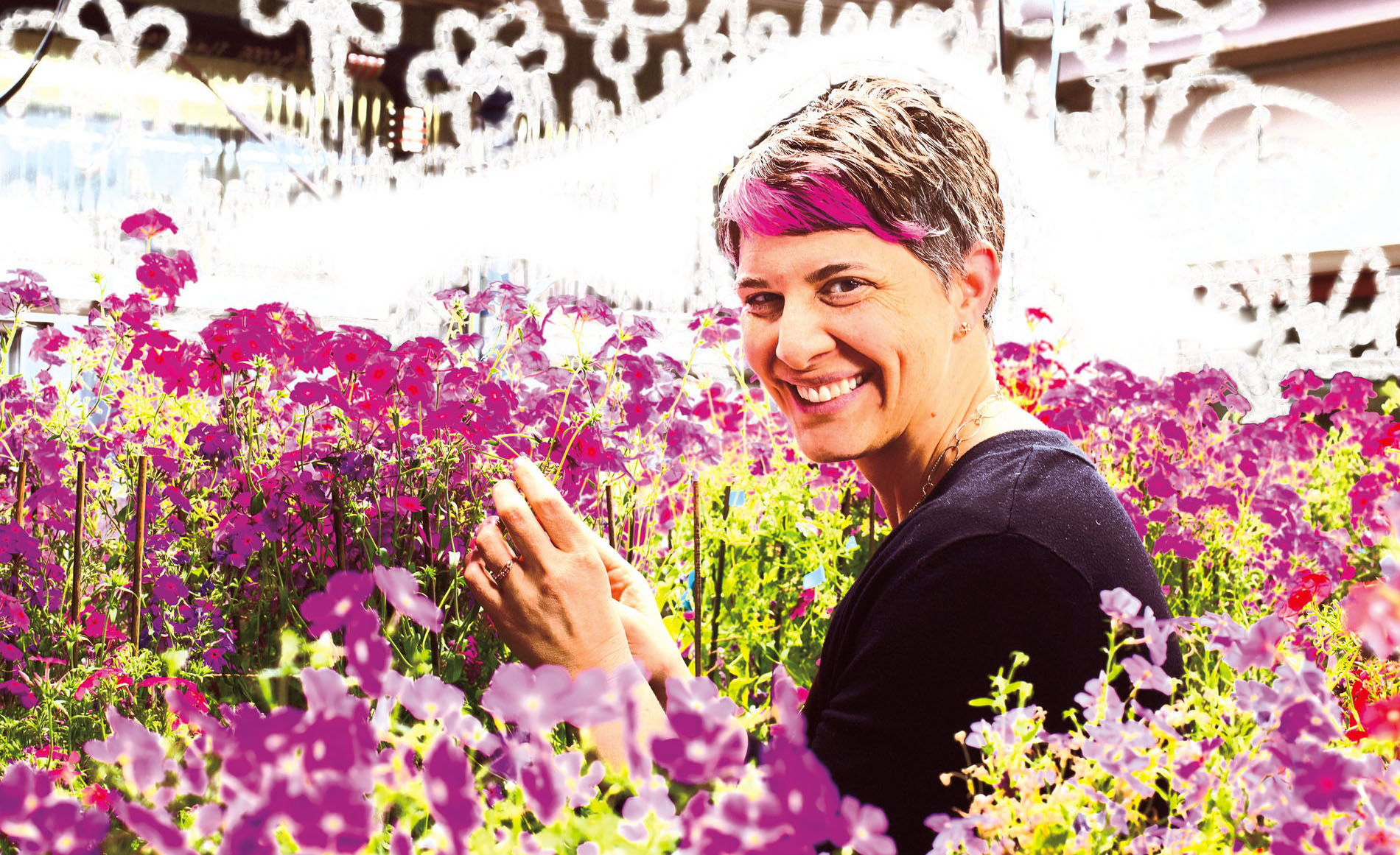Robin Hopkins Ph.D.’10 sports a streak of neon pink in her hair the same shade as the plant that has been the focus of her research – phlox, a small wildflower native to the open grasslands of the American South.
It might just be that pink is her favorite color. Hopkins notes that her adviser and mentor at Duke wondered if she chose her research topic just because it let her study pink flowers. “I can’t say he was entirely wrong,” she said.
Hopkins is now a professor of evolutionary biology at Harvard University, and through her research on this unassuming flower, she has developed new techniques to study genetic biology and helped settle a decades-long debate about how plants become different species.
“The more I did research, the more questions I had, and the more experiments I wanted to do,” said Hopkins. “I just never stopped studying phlox.”
Hopkins grew up in rural Vermont, splashing through creeks with her older sister and working in the family garden with her mother. That garden contained massive beds of perennials. Neighbors would stop by to admire her mother’s handiwork and stay to chat, so the days spent planting and pruning taught Hopkins that flowers could cultivate community.
An avid biology student in high school, Hopkins studied biology and gender studies at Brown University, where she graduated with honors. But, unsure of her grad school chances, she applied to eight graduate programs.
The day she interviewed to join biologist Mark Rausher’s laboratory at Duke, Hopkins stayed to attend an evening seminar. She remembers being impressed by the speaker’s thoughtfulness and by the crowd of enthusiastic students asking challenging questions.
“The community revealed through that presentation convinced me I would love to be a student there,” said Hopkins. The speaker who caught her attention, David Des Marais Ph.D.’08, would later become her husband and the father of her two children.
It was her adviser, Rausher, who clued her into a genetic mystery: Two flower species, Phlox drummondii and Phlox cuspidata, grow in the grasslands near Austin, Texas, he told her. Most of the time, both species are a pale blue. But in an area of prairie where the two species grow side by side, the swath of P. drummondii where they meet have petals that are a dark, blood red. It wasn’t clear why.
Hopkins spent weeks in fields of phlox, and as she watched butterflies flit from flower to flower, she noticed something. When P. drummondii petals were their natural blue, butterflies couldn’t tell them apart from P. cuspidata. The confused insects cross-pollinated the flowers, which then created infertile offspring.
Hopkins realized that P. drummondii solved this problem by evolving red petals whenever P. cuspidata grew nearby. This enabled butterflies to tell the Phlox apart, so they would not cross-pollinate. She studied how the evolutionary transition took place and went on to publish her findings on the process, called reinforcement.
“It was one of the most controversial ideas in all of evolutionary biology,” said Dr. Jenn Coughlan, a biologist at Yale University. Hopkins used the red P. drummondii to show that natural selection can favor color mutations to prevent cross-pollination.
Hopkins continues to research phlox in her Harvard lab, where she and her students dig into more plant mysteries. She sees herself in the crop of young biologists she works with and hopes she is planting fertile seeds of encouragement.
“Watching myself tell them how I feel about them being so strong and successful, I realize that I’m saying the same thing my mentors said about me,” she said. “I was not capable of listening back then, but little bits of me can now, and hopefully someday, my mentees will listen to me, too.”
